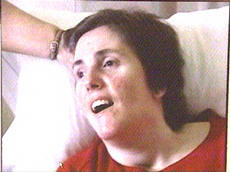
Last night, Rob Stein of the Washington Post published a fascinating piece on new technology that can potentially measure a person's level of consciousness by examining electrical activity in the brain.
Disturbingly, those conducting the research have found that numerous patients diagnosed to be in a persistent vegetative state are in fact, fully conscious according to their brain electrical activity. This obviously begs many bioethical questions about the capacity to diagnose persistent vegetative state. The article is worth reading in full, but below are a few quotes capturing the main points:
[In the experiment] "All the patients had the same terrible diagnosis: brain damage that marooned them in a "vegetative state" — alive but without any sense of awareness of themselves or the world around them."
"But then an international team of scientists tried an ambitious experiment: By measuring electrical activity in the patients' brains with a relatively simple technique, the researchers attempted to discern whether, in fact, they were conscious and able to communicate."
"…[O]ne man, and another, and, surprisingly, a third repeatedly generated brain activity identical to that of healthy volunteers when they were asked to imagine two simple things: clenching a fist and wiggling their toes."
"You spend a week with one of these patients and at no point does it seem at all they know what you are saying when you are talking to them. Then you do this experiment and find it's the exact opposite — they do know what's going on," said Damian Cruse, a postdoctoral neuroscientist at the University of Western Ontario in Canada who helped conduct the research. "That's quite a profound feeling."
"In 2006, Owen [a senior researcher in this study] and his colleagues described a young woman thought to be in a vegetative state. Her brain responded identically to a normal brain when scanned with functional magnetic resonance imaging (fMRI) as researchers asked her to imagine playing tennis or exploring her home. The case electrified neuroscientists. But it remained unclear whether it was a fluke… [I]n February 2010, Owen's team reported similar testing on 23 vegetative patients and 31 minimally conscious patients. Five repeatedly fired their brains in precisely the same way as normal volunteers as they underwent
fMRIs while being asked to imagine hitting a tennis ball and wandering through their homes. One patient was able to answer yes or no to a series of questions by thinking about tennis for yes and touring his home for no."
"The research inevitably raises questions about patients such as Terri Schiavo, a Florida woman in a persistent vegetative state whose family's dispute over whether to discontinue her care ignited a national debate over the right-to-die issue and congressional intervention in 2005. Schiavo's brother, Bobby Schindler, said the new study highlights the limits of medicine in providing an accurate diagnosis."
"Regrettably, Terri was never afforded these types of exams," Schindler wrote in an e-mail to The Washington Post. "Such testing could not have hurt Terri but could have helped her." Schindler and others called for a reconsideration of such diagnoses. These findings only reinforce our family's contention that the PVS diagnosis needs to be eliminated — particularly given the fact that it not only dehumanizes the cognitively disabled, but it is being used in some instances to decide whether or not a person should live or die, as it was used in Terri's case. None of us deserves to be deprived of food and water," he said."
Contact: Jeanne Monahan
Source: FRCBlog
